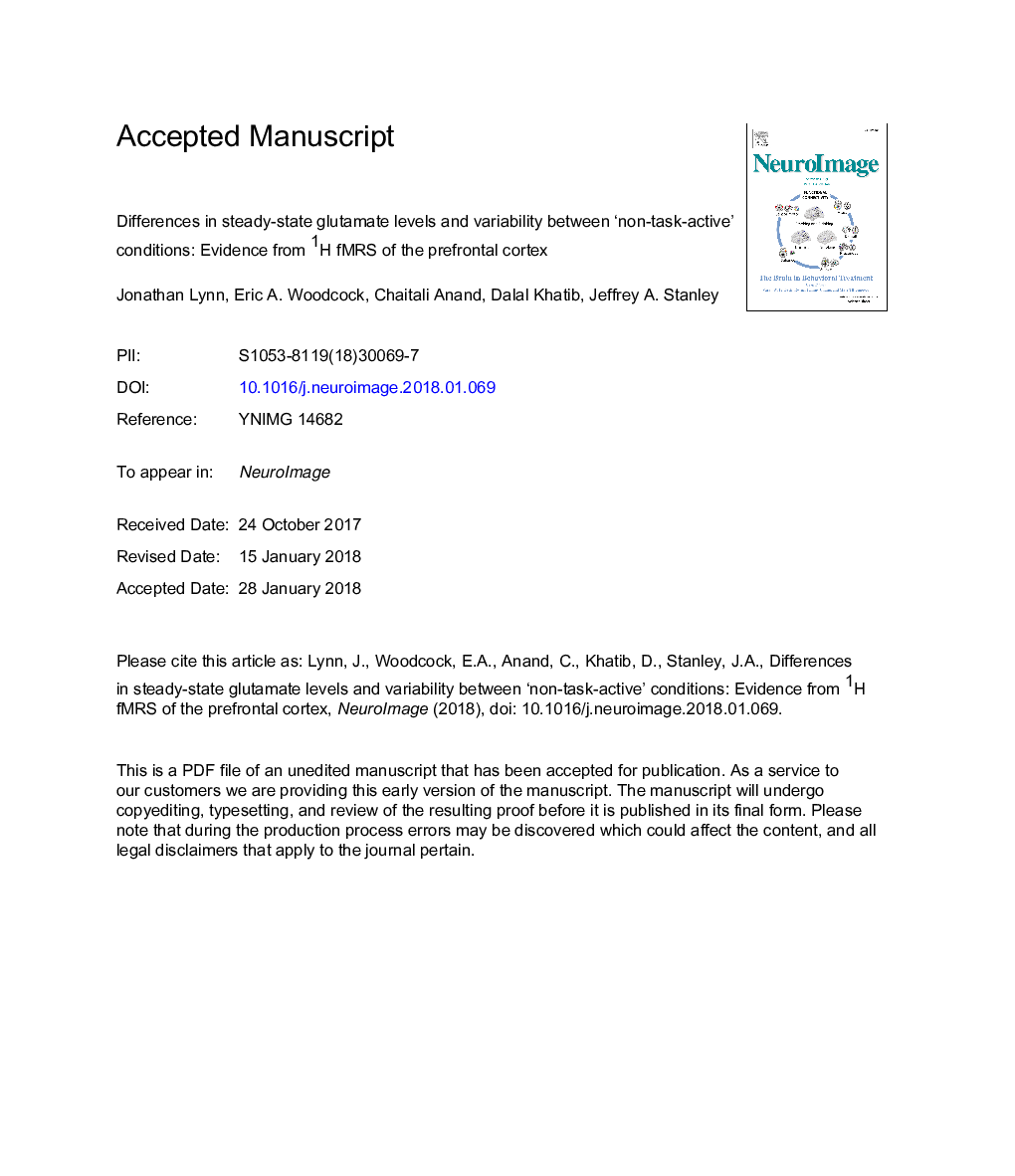| Article ID | Journal | Published Year | Pages | File Type |
|---|---|---|---|---|
| 8687046 | NeuroImage | 2018 | 43 Pages |
Abstract
Proton functional magnetic resonance spectroscopy (1H fMRS) is a noninvasive neuroimaging technique capable of detecting dynamic changes in glutamate related to task-related demands at a temporal resolution under 1â¯min. Several recent 1H fMRS studies demonstrated elevated steady-state levels of glutamate of 2% or greater during different 'task-active' conditions, relative to a 'non-task-active' control condition. However, the 'control' condition from these studies does vary with respect to the degree of constraining behavior, which may lead to different glutamate levels or variability between 'control' conditions. The purpose of this 1H fMRS study was to compare the steady-state levels and variability of glutamate in the left dorsolateral prefrontal cortex (dlPFC) of 16 healthy adults across four different putative 'non-task-active' conditions: relaxed with eyes closed, passive visual fixation crosshair, visual flashing checkerboard, and finger tapping. Results showed significantly lower glutamate levels during the passive visual fixation crosshair than the visual flashing checkerboard and the finger tapping conditions. Moreover, glutamate was significantly less variable during the passive visual fixation crosshair and the visual flashing checkerboard than the relaxed eyes closed condition. Of the four conditions, the passive visual fixation crosshair condition demonstrated the lowest and least variable glutamate levels potentially reflecting the least dlPFC engagement, but greatest behavioral constraint. These results emphasize the importance of selecting a proper 'control' condition to reflect accurately a 'non-task-active' steady-state level of glutamate with minimal variability during 1H MRS investigations.
Related Topics
Life Sciences
Neuroscience
Cognitive Neuroscience
Authors
Jonathan Lynn, Eric A. Woodcock, Chaitali Anand, Dalal Khatib, Jeffrey A. Stanley,
